Anne Halprin’s RSVP cycles was a difficult concept to grasp. From what I understand of Halprin, she is an activist choreographer who promotes social gains. She is against the constraints and concerns of society; issues such as environment, health or discrimination. I discovered that her main aim through these cycles was to “retain clarity in what is potentially a chaotic process” (Worth and Poynor, 2004, 112) and so RSVP provides structure to the creative process.
- R – the resources, the basic materials required for your score, such as how many people or how long the improvisation is.
- S – the score itself, whether it is open or closed, the strategies, all the elements that delineate time, space, place and people.
- V – “the value of the action”, giving analysis or feedback before the performance instead of after, reaffirming what it is you are trying to show through the improvisation.
- P – the performance.
Through analysing The Vortex, it was still difficult to see where the cycles fitted in. I understood how it was the most open score with the idea to create a group identity by the dancer’s gathering strength off one another, whilst maintaining a collective pulse. What I gained from the overall description was that throughout the performance, you first have to identify who you are in the context of the improvisation, to then discover who you are in relation to everyone else. From this I also discovered how an open score such as this makes it more difficult as there is more responsibility on the dancers, however in a closed score there is a clearer frame provided. The Vortex as defined in its simplest terms seemed much easier on paper than in performance, as it may become quite disorganised, therefore the RSVP cycles adds more structure to a very open score.
When creating our own piece using the RSVP cycles, we intended to create a structure that was visually interesting through dynamics and spatial awareness. Our resources were six people in the space at all times for 9 and a half minutes with 15-30 seconds at the end to find an ending. Our score was open, with strategies to find unison as many times as possible, no thick skinning, (as that has since become almost habitual movement), and not leaving the space. Through valuaction, we wanted to show its possible to do a score without thick skinning and to remain in the space. When demonstrating to the class, it was intriguing to perform a score we had created ourselves, yet it managed to somehow work. Because I was focusing so hard on finding moments in unison I found myself sticking in the space I started in, and because there was no thick skinning, I perhaps didn’t feel a strong connection with my fellow dancers. However we did succeed in challenging ourselves to connect in other ways to then find unison. Indeed, there were nice moments, such as a brief moment we all were on our knees, sitting on our heels, with our torso bent towards our knees and arms by our sides, facing a diagonal downstage left, for example.
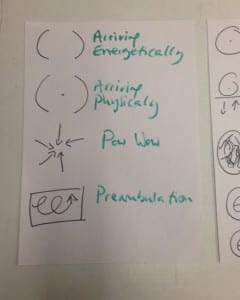
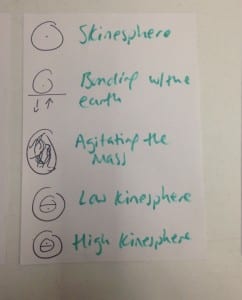
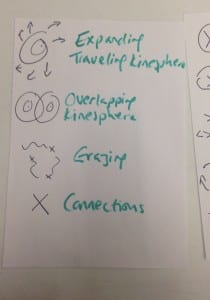
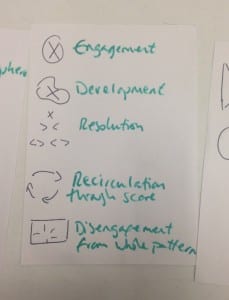
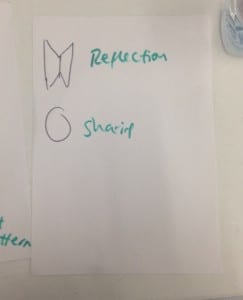
In the jam, we looked at a reduced version of Nancy Stark Smith’s Underscore. Usually this improvisation can last for several hours, however we compressed it down to 35 minutes. The overall piece felt like a warmup, I was able to go through each stage tuning in to what my body needed, for example during the skinesphere and agitating the mass sections, I had a lot of tension in my upper legs and lower back and so I focused my energy on those points to loosen them up. I felt I could have remained in those sections for a lot longer, but it seemed we moved on to the next stage very quickly, so I maybe didn’t indulge in them as much as I felt I needed. The overlapping kinesphere, grazing and connection sections were more intriguing, I felt as though I was making connections with people and acknowledging them around me, however this may not have been as easily perceived by the audience. I felt, due to the nature of the score, it was very relaxed and therapeutic, I didn’t actually want it to end.
This week I sense as though I felt more in tune with my body and really honed in on myself. However, also at the same time I believe that I am becoming more aware of others in the space, I may not have got to the stage of making clear connections yet, without thickskinning or interpreting their movementxs but over time I think that will become more apparent, as similarly to Halprin’s The Vortex, you have become more aware of yourself to become more aware of others around you in the space.
Worth, L. and Poynor, H. (2004) Anna Halprin (Routledge Performance Practitioners). London: Routledge.